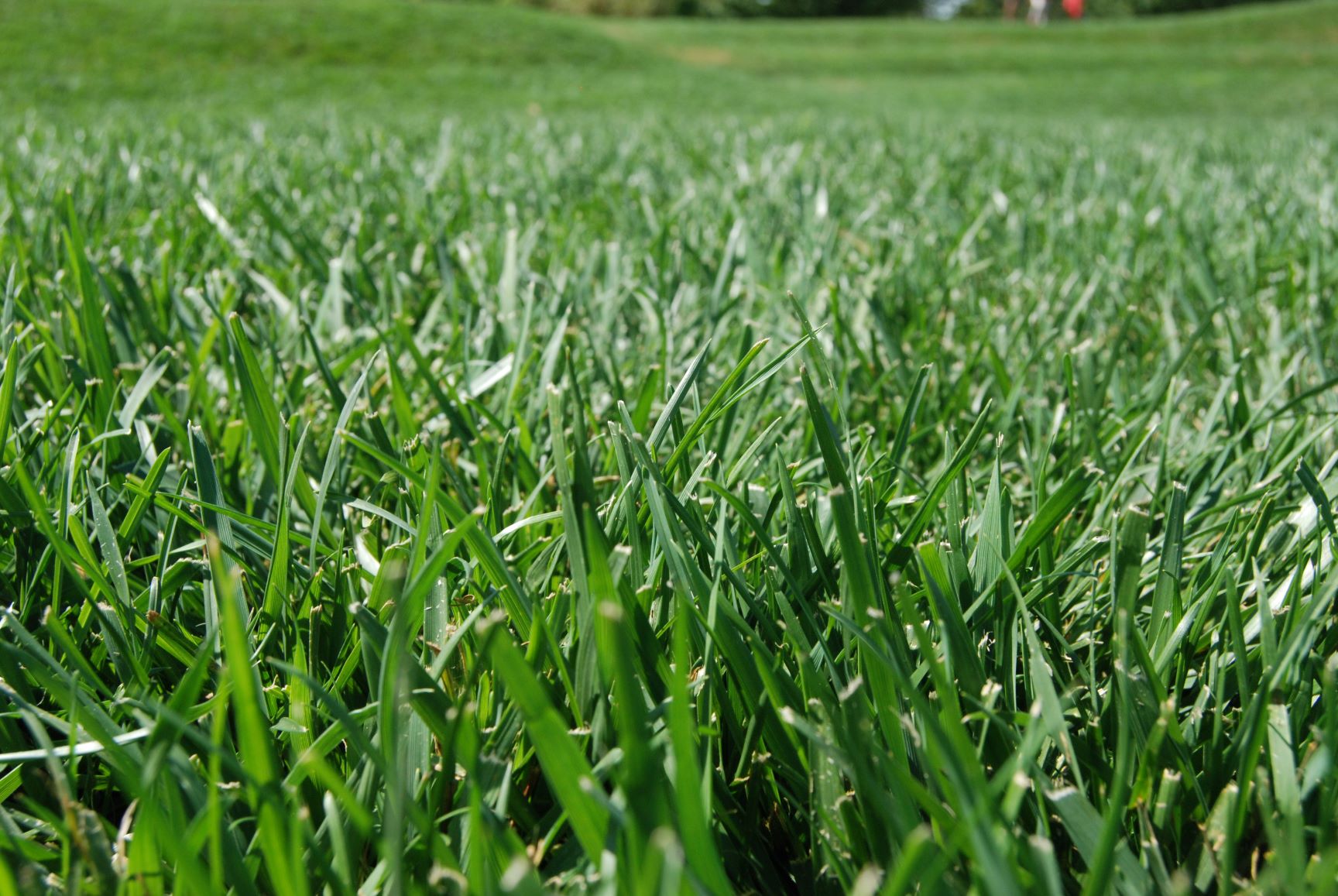
Turf-type tall fescue is a cool-season grass with good heat and drought tolerance. | Photo Credit: Janice Milanovich, Illinois-Indiana Sea Grant
A healthy lawn all year long.
Summer heat and dry conditions are important considerations for July’s list of natural lawn care practices.
Dates may vary by geographic location and turfgrass species. Choose practices based on your lawn’s specific needs.
Things to do in July:
- Mow high to shade the soil and increase resistance to heat and drought stress. Remove no more than 1/3 of the leaf blade at a time.
- Leave grass clippings on the lawn to return organic matter, nitrogen, and moisture to the soil.
- Manage your lawn during drought. Reduce watering and let your lawn go dormant (turn brown) during periods of drought lasting less than 4-6 weeks. Water once every 4 weeks with ½ inch of water, limiting traffic and mowing to minimize damage.
- Monitor for signs of weeds, disease, or pest problems. Begin monitoring for white grubs towards the end of the month if they have been a problem in the past.
- Fertilize high maintenance, irrigated lawns. The amount and timing of fertilizer applications should be determined by your soil test results, lawn quality, and maintenance preferences.
- Stay cool and watch a few Lawn to Lake videos for some natural lawn care inspiration.








